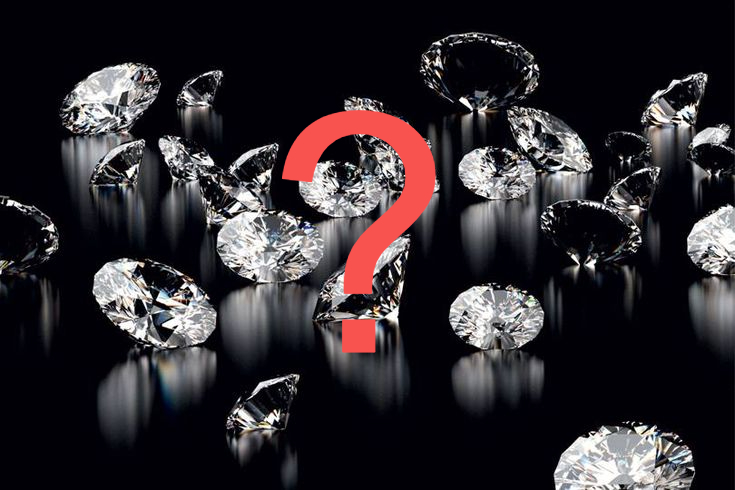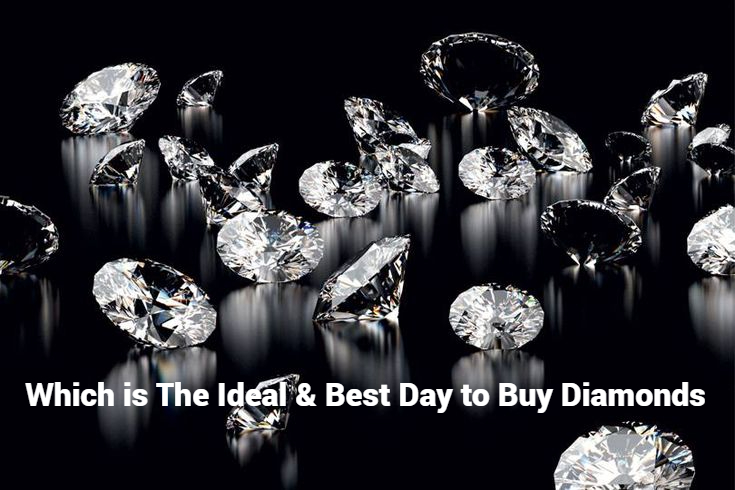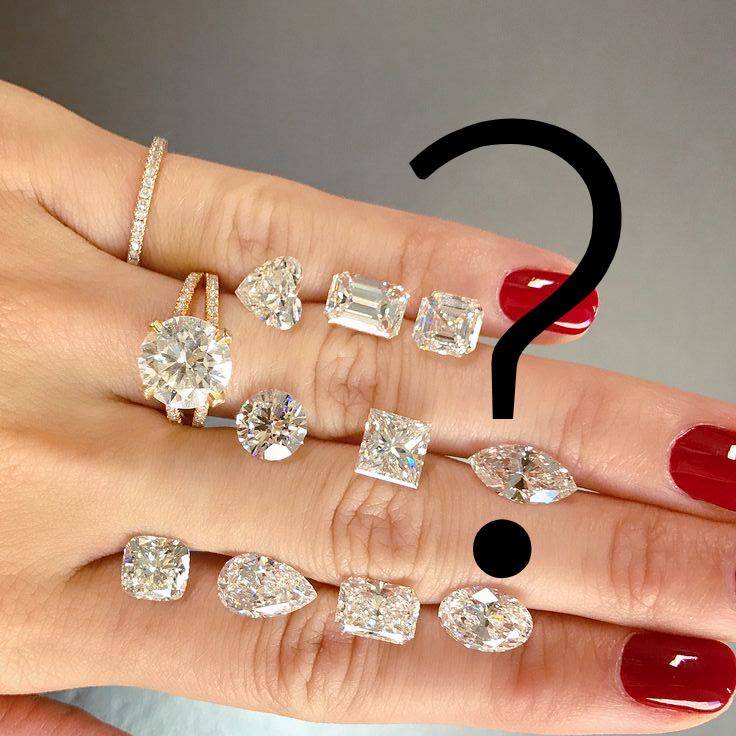The structure of a diamond is set in such a way that every part is important. If there is an imperfection in any part, the light performance and visual appeal of the diamond could be affected. For this reason, it is important that diamond buyers understand each part and how it contributes to the overall quality of the diamond.
In this article, we would examine the diamond crown, the pavilion angle and the culet. We discuss in the following order:
Introduction
- The Crown: This is located between the table and the girdle. Light enters or leaves the diamond through it
- Crown height: Measurement from table to the girdle. Can be expressed in percentage relative to the girdle diameter
- Crown angle: refers to the angle that the crown facets make with the girdle. The Ideal crown angle is between 32 and 35 degrees.
- The crown acts as a window for the diamond
- The crown helps to disperse light, contributing to fire and scintillation.
- It also refracts light to the pavilion.
- The Pavilion: Acts as the mirror of the diamond. It reflects light out of the diamond
- The pavilion angle refers to the angle the pavilion facets make with the girdle. The recommended pavilion angle for optimal reflection is 40 to 41.6 degrees
- The critical angle is the angle beyond which light is reflected, instead of passing through a material
- The pavilion depth is the measurement from the girdle to the culet. It is expressed in percentage relative to the girdle diameter.
- A shallow pavilion would over-reflect light to the crown, leading to diminished brightness.
- A pavilion cut too deep would allow more light leakage through it, reducing the brilliance and sparkle
- The Culet: is the lowest portion of the diamond where all facets meet
- It is described as none, very small, small, medium, large and extremely large.
- The none culet grade, also known as pointed culet and no culet is the best for optimal reflection of light
- The culet is the thinnest portion of the diamond that can be easily chipped off.
- All diamond buyers should have a basic understanding of diamond parts so they can make better choices.
THE CROWN
The diamond crown is the part between the table and the girdle. It is at the height of the diamond and it is called a crown because when viewed from the top, it looks like a crown placed upside down. The crown is the part through which the largest amount of light enters or leaves. As a matter of fact, it significantly affects the brilliance and sparkle of the diamond. The crown has two parameters which are always considered when it is discussed:
- The Crown height: This refers to the measurement from the table to the girdle. It is then expressed in percentage relative to the girdle diameter. The crown height is usually expressed to the nearest 0.5%.
- The crown angle: This is the angle that the bezel facet of the crown makes with the girdle of the diamond. In ideal diamonds, the crown angle should measure between 32 and 35 degrees. This feature of the diamond determines the face-up appearance of the diamond. It allows light to enter and exit from different directions. If it is angled too shallow, then the crown would appear flat and then there would be a lot of light leakage, which would reduce the brightness and sparkle. Again, if the crown is angled too deep, then it means there would be reduced light penetration and the diamond would appear duller and less attractive.
The crown, together with the table acts as a window for the diamond. The facets that are present also help to disperse white light into its various components. This affects the amount of fire and scintillation that is observed in any diamond and it is important that attention is paid to its dimensions when a diamond is to be purchased.
Another important function of the crown is to guide the direction of light into the diamond. It refracts or bends light at its angle and so the light can continue its journey to the pavilion.
THE PAVILION
The pavilion is the part just below the girdle and above the culet. Just as the diamond crown serves as the window for the diamond, the diamond pavilion acts as the mirror of the diamond. Light comes in through the table and crown, already bent to land on the pavilion. The pavilion is cut in such a way that it is able to bend light to the opposite pavilion. The opposite pavilion then bends light enough to pass through the table and this produces the effect of brightness that is seen when a diamond is viewed.
Some terms that are related to the pavilion include:
- Pavilion angle: The pavilion angle refers to the angle that the bezel facet of the pavilion makes with the girdle. This angle determines how well the diamond would refract or bend light. It must be greater than what is called the critical angle (which I would explain) so that light can be adequately refracted. It is recommended that the pavilion angle should fall between 40 – 41.6 degrees. At this angle, it has been observed that reflection is optimal and the amount of light loss is at the lowest.
- Critical angle: In optics, this refers to the angle beyond which light landing on a surface would be totally reflected. So for instance, if the critical angle of a substance is said, 40 degrees. It means if rays of light come in at 45 degrees, then all of the rays would be reflected from the surface of that material, instead of passing through it.
Get it?
The implication is that the value of the pavilion angle for a diamond must be such that light lands on the pavilion at an angle greater than the critical angle so that light coming can be totally reflected the observer, which would produce sparkle and brilliance.
- Pavilion depth: The pavilion depth refers to the measurement of the pavilion from the girdle to the culet. It can be expressed in pavilion depth percentage by dividing the pavilion depth by the girdle diameter multiplied by 100 :
Pavilion depth percentage = (pavilion depth/ average girdle diameter) x 100
The significance of the pavilion to the quality of the diamond cannot be overemphasized. If the pavilion is cut too shallow, then it means that the critical angle is increased and the rays of light would be bent too much, to the extent that they would be directed to the opposite crown instead of the opposite pavilion. These rays would be lost and the diamond would have reduced brilliance and sparkle.
Again, if the diamond is cut too deep, then the angle is lesser than the critical angle and so more light is lost through the pavilion facet, instead of being reflected.
The pavilion is, therefore, an important factor to be considered when purchasing a diamond.
THE CULET
The culet of a diamond is the lowest part of the diamond. At the culet, all facets meet and the diamond is sealed off. This arrangement is to prevent light from leaking out of the diamond, instead, light is reflected in the diamond. The following descriptions are used to describe the culet, depending on its size: None, very small, small, medium, large, and extremely large.
The most preferred of this is the one graded none. Diamonds that have larger culets tend to leak more light than those without culets or smaller sized culets. As a matter of fact, the ideal diamond would have a culet that is invisible to the naked eye.
A diamond with a large-sized culet would also have a lower cut grade due to its reduced brilliance and sparkle.
It is a good thing that GIA reports would always describe the culet of any diamond. Therefore always pay attention and be on the lookout for only diamonds with the ‘None’ or ‘No culet’ description. This grade of culets could also be described as a ‘pointed culet’. They would most likely fall into the excellent range.
It should also be stated that the culet is the thinnest portion of the diamond and so it can easily be chipped off. Therefore, care should be taken to always protect the culet.
In conclusion
The diamond has constituent parts that each contributes to its beauty and brilliance. Once these parts are correctly positioned, the quality of the diamond is increased. However, if they are not properly cut, the quality is reduced.
Every buyer should have a basic understanding of these parts and how they affect their diamonds. This would help them to always get the best quality anytime they go shopping for diamonds.
However, if things get a little murky and you are not able to distinguish well from bad quality, it is always better to call a certified diamond expert or your gemologist to give you advice.
Your preferences would also come to play as you can vary in different parts to suit what you need exactly.
Overall, the choice still remains yours!


